An Expat’s Guide to Making a Home Away From Home
Around the world about 230 million people are living outside their home country, myself included, according to data gathered by Feedbacq, an international movers directory company. If expatriates were a nation, we’d be the fifth largest in the world. In developed countries the estimate is that one person in every 10 people lives outside his or her country. About 6 million Americans legally reside outside the United States, and 5 million Brits are doing the same.
We identify ourselves as expatriates (expats) or migrants, and we live in a sort of cultural middle ground that’s hard to explain. We find it challenging to become fully integrated with our host culture, and rather easy to quickly become out of touch with our home culture.
The following are ways an expat can use home design as a way to cope with living across cultures. There are a few of my own tips that I’ve picked up over my past eight years as an American expat (six of those living in Italy), and several more from other expatriate Houzzers.

1. Stay positive and nest. Living in a different country requires a very open-minded and positive attitude. While we all moved to our host countries with varying degrees of desire and circumstance, there’s no denying that it amounts to a lot of homesickness and struggles adapting. Nesting in our new homes is absolutely essential to being able to psychologically handle the culture shock of living away, no matter how beautiful our new surroundings.
Shona Carcary (seen here) and her husband, Shaun, natives of South Africa who are now living in Florida, are perfect examples of a great expat attitude: “I wake up daily feeling grateful and blessed to be in this wonderful country — and our home,” she says.
See more of this home

2. Embrace your new surroundings. For some the feeling of diving in head first to a new culture is exhilarating, and they can easily get into the adventure and immediately test their limits. For these kinds of expats, cutting ties with their home country’s aesthetic helps them become integrated with their new surroundings. This “when in Rome” approach is just what Simon Evans, a former Londoner who set up a home in the jungles of Bali went for.

The stark contrast between his open-platform-style home in Bali and his urban apartment in London helps him take in and appreciate all that his new environment has to offer. “Living here is like a dream,” he says. “The design of my house really allows me to experience all of nature up close.”
See more of this home
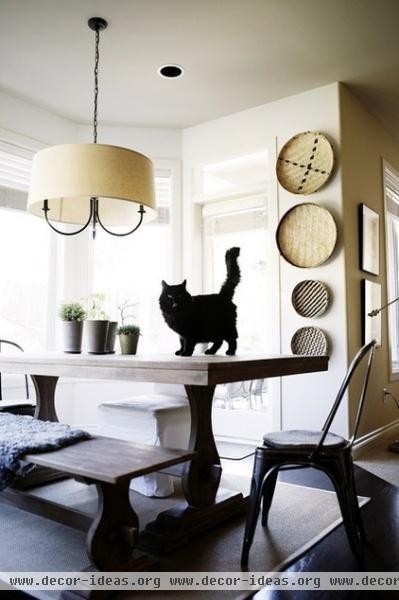
3. But don’t forget where you came from. While jumping into a new culture head first is one way to go, many expats prefer to use the home as for preserving a certain feeling of normalcy, which of course means something completely different for each expat. For Sweden native Monika Claassen, that means infusing her Northwest U.S. home with a Scandinavian style that she is comfortable with.
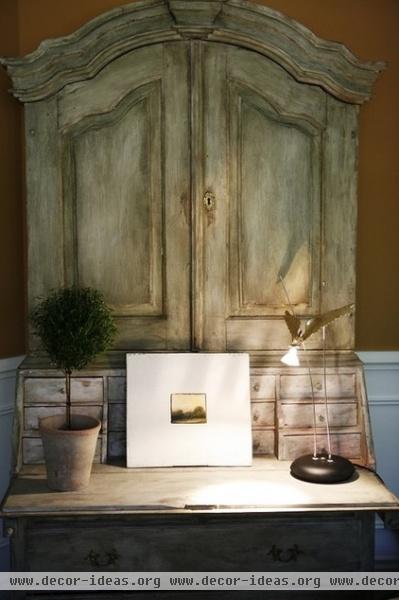
“Some of my dearest items have a personal connection or history to them,” she says. “For example, an old Swedish 18th-century secretaire really reminds me of my home country. I’ve named it Longing Home, and I keep small Swedish treasures in it.”
See more of this home
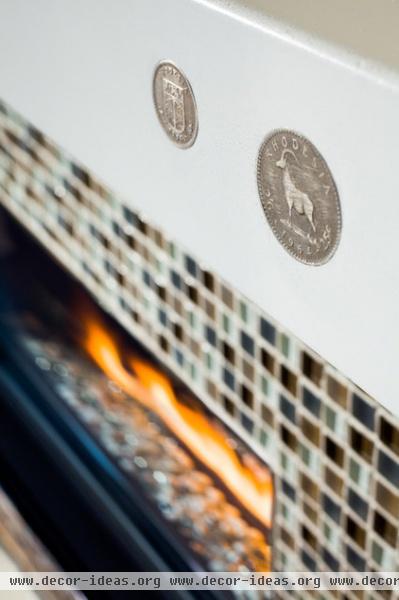
It’s funny what becomes a “treasure” to an expat. As time passes, even the most common objects from a former home can become reminders of what seems like a different life.
A family in Canada has this custom fireplace mantel with Rhodesian coins cast into place, a small but elegant detail.
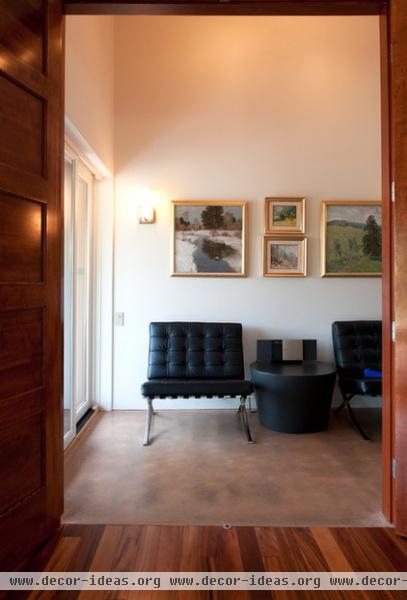
The Siberian couple who lives in this Vermont home has a series of paintings by Russian artist Postoev V.D. The scenery reminds them of nature back in Siberia, where winters often last up to five months.
See more of this home
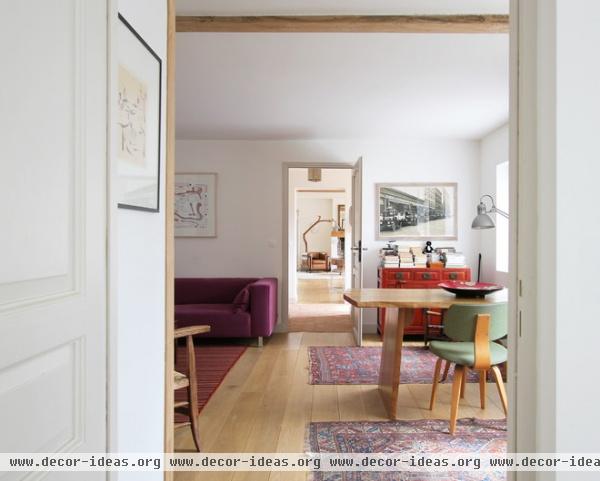
4. Let your hybrid identity define your style. Instead of fearing the loss of your identity in the face of a new culture, find a way for it to exist in harmony with the style of your host country.
Don’t be afraid to let contrasting styles take over; the look will reflect the eclectic mix of cultural influences in your life. The mix of styles in this home in Normandy, France — where a Persian couple lives — is a fitting example.
See more of this home
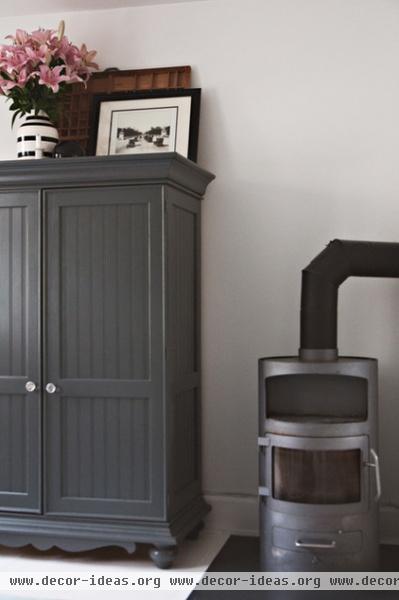
It can be difficult to create a home away from home not just psychologically, but also logistically. Often the options are different, the materials and prices are unfamiliar, and it can be difficult to balance what you find normal and what fits in with the local setting.
Tina Fussell, the mom of an American family of five in Copenhagen, Denmark, found it difficult to get wooden furniture there. So she brought a piece from the States with her and painted it to match their style.
See more of this home

Classic Paulistano chairs — designed by Brazilian Paulo Mendes da Rocha — and a Brazilian hammock helped turn this pavilion in Minnesota into a South American–style barbecue station.
Which leads me to perhaps the most important item on this list: food!
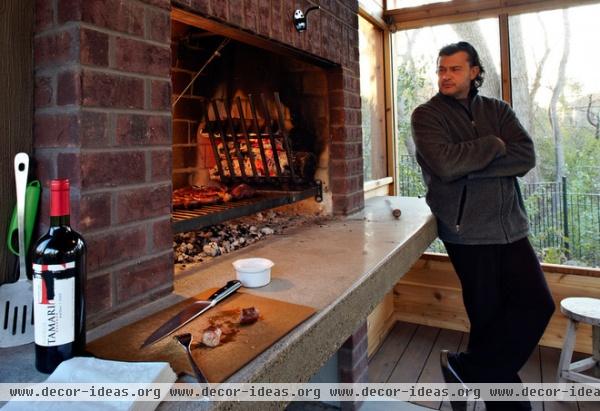
5. Share your culture through your kitchen. Ask an expat, “What do you miss most about home?” and you’ll inevitably get a list packed with food items.
We can often be found in the kitchen, attempting to merge the tastes from our childhood with the cooking culture of our host country with substitute ingredients and modified recipes. This Uruguayan native, Marcelo Valdes, imported an authentic South American grill to his Minnesota home — something I’m sure his friends and family are pleased about!
See more of this home

The best part about showing your expatriatism in the kitchen is that other people get to benefit from it as well.
When cooking for locals from your host country, first try introducing new recipes within the traditional setting that they are familiar with. For example, Elleni Makris, a California native in Greece, follows the local Greek custom of a late lunch, around 4 p.m. With the comfort of a format that is familiar, you might even be able to introduce something new to locals who would otherwise not be able to learn about another culture.
See more of this home

6. Design for multiple time zones. Many expats work strange hours and telecommute to offices back in their home countries. Shown here is the home office of a Vermont man who telecommutes to Russia.
A home office should be equally tranquil during the day and night. During those early morning video chats with folks back home, it’s nice to give them a beautiful view to look at behind your head.

7. Make photos and memories part of your daily life. You’d be surprised how quickly you can forget. When you relocate, you often lose many memories simply because the visual cues aren’t there anymore. To prevent your travels and your home culture from fading away, use photos and mementos as pleasant reminders.
Hang your reminders on the wall but don’t get hung up on them. Try to find that balance between remembering the past and looking forward.

8. Keep stretching your limits. Being an expat is one of the most challenging, rewarding, frustrating and beautiful things. There are days when you absolutely love where you are and consider yourself incredibly lucky. And there are days when you feel your limits being stretched and get that pang of homesickness. Either way, there’s no going back. There’s no way to unlearn the range of experiences gained from living in multiple cultures.
My advice? Let your home show that range of experiences and use interior design as a tool for teaching others about your home culture.
See more photos of expat homes
Your turn: Are you an expat? Share your home with us in the Comments.












